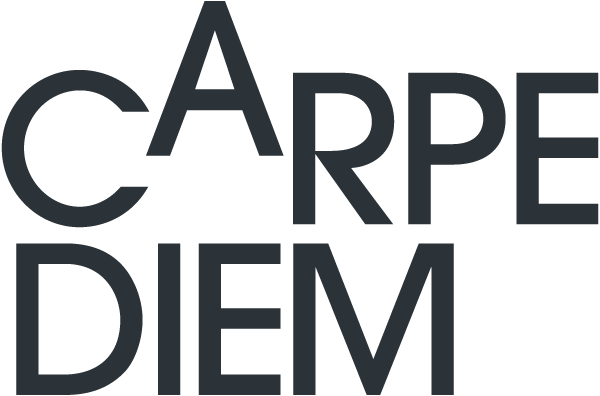
The housing affordability struggle of our kids
For those of us fortunate to have owned our homes over recent decades (apparently about 77% of Boomers across Canada) the combination of market developments and federal tax policy has left us with substantial non-taxable capital gains on our principal residences; in other words, lots of equity that for most of us forms the backbone of our own retirement security and financial planning. That same market activity, though, finds us with kids and grandchildren struggling with what is likely their greatest expense every month – their unaffordable housing – whether they choose tenure as a renter or as an owner.
We’ve grown up with the ideal of home ownership – usually implying a ground oriented, detached single family home with its own fenced yard and in recent years, the proverbial child’s play area and a trampoline in the yard. As we grow older, the significance of home ownership looms even larger when we consider the potential for intergenerational family support. When the generations live near each other, grandparents can take a turn with caring for the grandkids and when they get older, the kids and grandchildren can provide immeasurable support to the elders. But if the appeal of ownership is compelling, these days the next generation is likely to live in distant suburbs or in a whole different region or province, in order to obtain that ideal of home ownership. It’s no exaggeration to say that housing unaffordability is dividing families.

Various roles for the Bank of Mom and Dad
No surprise then that the concept of “the Bank of Mom and Dad” has become a regular topic in financial markets and in the media. Under the right circumstances, financial institutions are delighted to advance money; perhaps under a homeowner line of credit (a “HELOC”) secured by substantial equity in the elders’ home, to facilitate the transfer of cash down to the next generation to assist in their home buying. In a holistic sense, family estate planning can even consider it an inheritance in advance; perhaps a forgivable loan that never gets repaid while the elders are alive, but is simply set off against the younger homeowner’s share of the estate when it gets distributed. That repays the loan and maintains equity among the siblings and other co-beneficiaries of the estate.
Elders and Boomers are lately considering a range of options for providing financial support to their heirs in the housing market, but there are potentially complicated tax and financial considerations. As well, think of the complications of arranging legal agreements where business and financial affairs are shared among loving family members, and interests are inevitably liable to be transferred, through that estate plan and the Will, to following generations.
One thing that’s extremely clear is that, based on a qualifying interest rate that is two percentage points higher than the contract rate offered by their bank, the federal government’s Stress Test currently requires first home buyers to qualify for their mortgage as if they were paying interest of around 8 per cent. That puts mortgage qualification and the dream of ownership out of reach of the vast majority of even upwardly mobile, career oriented families – and it brings their elders to consider a role as the Bank of Mom and Dad. Let’s look at a few options for that role, and the relative advantages and disadvantages of each.

Make a down payment loan
A Royal Bank study in 2021 reported that the average family loan to first home buyers in the lower mainland region of metro Vancouver was $180,000. This family financing option breaks down into two alternatives; make the loan repayable, or forgivable.
PROS & CONS
Repayable
This is where Mom and Dad truly do act as a bank. They can decide on the amount they’re comfortable with. If capable of a high enough amount, they might even replace the institutional first mortgage lender (as long as they charge a “market reasonable” interest rate). As an “alternative lender” and not a federally regulated financial institution, they would not be required to apply the Stress Test. In light of rate variations over recent years, an aggressive estate plan might take the position that an extremely low rate, locked in for, say, a five-year term, should be considered reasonable. That way the kids could pay very low interest and Mom and Dad would have very little tax to pay on very low interest earned. The loan arrangement might even permit accumulation of the accruing interest and the option to pay the whole loan off from an eventual bequest through the estate. This scenario will be a rare one, open only to the relatively wealthy among us.
The worst disadvantage to this lending technique came as a shock to me in an interview I had with a Dad, several years ago, who had supported no less than three sons in their respective first home purchases. He said he always stayed awake at night worried whether their relationships were going to last. If any of the wives ever left their son, they’d take away a 50% share in any equity built up in the home, through matrimonial law. The only obvious solution to this dilemma would be for both sides of the family to share equally in the down payment loan. More likely though, it steers parents away from outright down payment loans and into other possibilities for lending financial support.
Forgivable
If the elders wanted to make the loan forgivable they could enter into an agreement that stipulates that that would apply, as long as the marriage stayed together. Gifts are not income to the recipient and are therefore non-taxable. The loan agreement could go on to say that if the marriage failed, both parties would remain equally liable for repayment. In this scenario, however, we’d have to imagine that there would still likely be loan recovery difficulties for the Bank of Mom and Dad, amidst complications in matrimonial settlement for the separated younger couple.

Co-sign as mortgagor (with a share in ownership)
CONS
The co-sign option also breaks down into two distinct alternative approaches, which we’ll distinguish in a moment. Generally, co-ownership is preferred by lenders due to the relative ease in pursuing any owners for repayment. Usually, the elders would have higher net worth and more liquid wealth that could be chased down to satisfy the mortgage debt in the event that the occupying co-owners went into default.
And in virtually every case, a bank would require the co-owners to take on what is called “joint and several liability”, meaning that the bank could pursue any one of the owners for as much as 100% of the loan.
This “contingent liability”, while still only a possibility, weighs equally on their credit profile and limits their potential to borrow for other reasons, such as investments or lifestyle indulgences. In whatever format of “co-signing” a family might choose, their kids’ mortgage debt will count as their own on any loan or credit application. This can limit parents’ ability to borrow for themselves or to help their other children who might similarly need a mortgage co-signer.
PROS
Still, co-signing in either form can score a big benefit rating where it helps a young couple buy a bigger home instead of having to settle for one they will soon outgrow.
Option a. Become co-owners, as “joint tenants”
The first of the two options for co-ownership is the most common – called “joint tenancy”. To begin with, the name is unfortunate as it suggests some kind of “rental” by a tenant, but really means shared ownership. Not to overly complicate things here, but think of the co-ownership occurring out of either a gift or a loan from the benefactors – and if a loan, one that might be expressed as forgivable under certain circumstances. Under this tenure option, there are no designated percentages of ownership. All joint tenants share equally in the whole (“undivided interests”), and their share passes equally on to any remaining joint tenants when they die.
PROS
It’s called the “Right of Survivorship”, and it works beautifully to avoid the joint tenants going through a potentially lengthy probate process after the elders die (Probate is the analysis, administration, and eventual distribution of estate assets, under a Court-ordered system. It involves probate fees, time, and until its completed, constraints in the use and division of the assets.)
For millennia, the right of survivorship has been used to transfer property down through generations of families. Some even put their kids on title as joint tenants to the family home, in advance of their deaths, fully intending that it will pass automatically to the kids upon their death without the complications of probate. I have seen this backfire, though – where two ingrateful sons mistreated their mother while sharing her home, and as majority co-owners were able to stand against her selling in order to extract her equity and finance a better life for herself in a retirement community. (Fortunately, the “bad boys” were persuaded to cooperate and Mom got the care and lifestyle she preferred and deserved!).
CONS
Don’t forget the downside implications of that contingent liability, as discussed already. Next, the automatic operation of the “right of survivorship” precludes passing specific shares in ownership of the home to various beneficiaries that may or may not include the young family that shared title as joint tenants. Where joint tenancy was destined to leave the entire home to one of the kids, the estate plan might have to divvy up other assets to try to achieve some semblance of equal wealth distribution among the various beneficiaries.
Where several beneficiaries share joint tenancy, they’ll still be left with the task of figuring out who would buy out who, or how to share the use of the property. Commonly, joint tenancy works with a family cottage that is expected to go on being shared, after the parents have passed. Devolution down to the next (3rd) generation will inevitably trigger the need to decide when to sell and divide the proceeds, or to have a buy-out that keeps the property in at least one part of the family.
Option b. Become co-owners (as “tenants in common”)
(again, an unfortunate name given it’s ownership and not rental)
With ownership as tenants in common, parents could own as little as a symbolic 1 per cent of the property. If the co-signers were tenants in common, whatever percentage of the property was designated to be theirs would be dealt with in their estate after they died. Instead of jointly owning the undivided whole (as with joint tenancy) they’d own a fractional portion where upon their death, the other party maintains the other fractional part of the property, and theirs goes into their estate. From there, it could be split in any way they chose to stipulate. Under this format, parents could gift, say, 25% of their family home to the heir who wanted to live in and inherit it, with the 75% portion going into the estate – say, to be shared among 3 other kids. Everyone ends up with ¼, but the co-owners with the first 25% would need to buy out the estate to acquire the other 75% for full ownership.
PROS & CONS
Co-ownership through tenancy in common affords the opportunity to direct a portion of the ownership to one or more beneficiaries other than the co-owner, through the Will and the estate, rather than through an automatic right of survivorship. As already mentioned, that could leave the kids with the complication of deciding who buys out who, or how to share the property.
Perhaps in rare cases there might even be a plan to co-habit the property first as tenants in common, with the one child as co-owner with Mom and Dad. The Wills could designate how Mom and Dad’s portion of ownership would be shared among the beneficiaries, and the Will would effectively convert the non-owning beneficiaries into co-owners as tenants in common with their occupying sibling when they received their inheritance. This scenario might be easier to visualize in the context of Mom and Dad having lived there with one child initially sharing the mortgage burden (in return for a share of the home). After both of the parents were gone, the home would be owned and shared, but in designated percentages as tenants in common, as distinguished from the automatic equal rights of survivorship, between joint tenant co-owners.
Tenancy in common implies the need to stipulate for the vesting of the co-signor’s portion of ownership in their named beneficiary(s), though their will. It’s not so much a disadvantage as an option and an opportunity for asset splitting among beneficiaries. It will have the same implications for managing a loan agreement or a gift, and the same effect on the contingent liabilities of the financial benefactor, as taking co-ownership through joint tenancy.

Sign as Guarantor
CONS
The tempting presumption under a guaranty agreement might be that the lender would first pursue the primary debtor (the owner of the property) before going after the guarantor. Often, however, banks’ standard form agreements will give the bank the luxury of pursuing the guarantor even prior to exhausting all of its remedies against the primary debtor. That would leave the sponsoring parents, if they had been that guarantor and were pursued, to try to recover from their own kids under some kind of indemnity agreement. In any scenario, this would be complicated business between otherwise loving family members. Potentially, it could be left to the estate to work out, with one or more of the beneficiaries as a debtor to the estate. Messy business to leave to one’s family.
Even with their self-serving loan agreement documentation, lender’s don’t find the guarantor role for Mom and Dad as appealing as co-ownership, due to legal complications in pursuing a non-owner for payments or repayment in full of the debt secured against the property.
PROS
If the parents felt highly confident of their heirs’ ability to repay the guaranteed debt, and were prepared to go forward with that assumption, the guarantor role allows leaving 100% ownership with the home buyers. They’d potentially leave a recoverable debt as an investment, with their estate, (if the kids defaulted, the bank pursued the guarantors, and the kids then owed indemnification back to the guarantors) but they’d leave the kids with full ownership of the home.
Take title, but with a Bare Trust Declaration
PROS
A Bare Trust would declare that the nominal title holders are involved to help with financing, but for no “beneficial interest”; no interest in the economic benefit of a property. The parents would not list the home as an asset, and nor would they owe capital gains tax when they died. If the beneficial owner treated the home as their principal residence, they wouldn’t pay capital gains tax, either (at least, under Canada’s current tax regime). A Bare Trust affords the option of leaving a full beneficial ownership with the resident kids, that doesn’t change with the death of either or both of the nominal owner/trustees.
Potentially, the terms of the trust could stipulate that the beneficial ownership would vest in the intended partner in a marital relationship, but not be subject to the automatic sharing invoked by matrimonial law. This would require a collateral agreement from the marital partner destined to be denied an ownership share in the event of marital collapse (often called a “pre-nuptial” or “cohabitation” agreement).
CONS
Trustees on title with no beneficial ownership in property must still comply with tax-filing obligations under the underused housing tax, which came into effect in 2022. The federal levy is aimed at foreign nationals who own vacant or underused property, but tax accountants are warning that the new rules also make it mandatory for many Canadians who hold residential property in trust to file a required return every year. Failure to do so can result in penalties starting at $5,000 for each affected individual listed on title.
This is a broad overview to stimulate the reader’s thinking. Remember that everyone’s circumstances are unique and warrant independent expert advice from your tax advisor and a lawyer.

